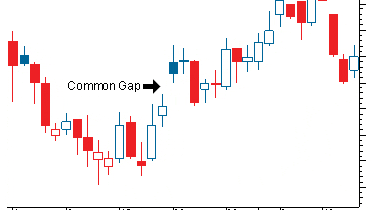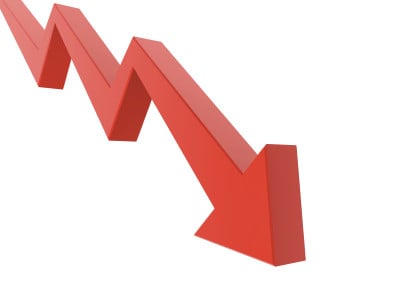If you’re trading penny stocks, you’ve likely heard market makers’ signals. They’re a hot topic with stock traders, no matter the stock’s price. But are market maker signals real and can they help you make smart trades? Keep reading to find out!
Many retail investors and day traders believe that market makers communicate through a series of signals.
There are some indications that these signals exist: they’re made up of a mix of quotes, activities, and order requests.
Some believe that they significantly impact the market, while other investors argue that they’re not in the first place.
In this guide, we’ll explain the 5 most common signals used by actual market makers and what they mean.
Keep reading to learn more about what they are and how investors use them for trading stocks.

What Are Market Makers?
Before we get into the details of market maker signals, let’s discuss what they are in case you don’t know.
A market maker is an individual or major firm that quotes both a buy and sell price in a security, usually on two separate exchanges.
This is called providing liquidity because they are creating a market for buyers and sellers of the stock.
Typically, they work on over-the-counter (OTC) markets where there is no centralized trading floor or NMS (National Market System).
They provide bids and offers, also known as asks, as well as the market size for each.
Many penny stock and non-penny stock traders follow these signals to try to capitalize on market moves — with varying success.
Market Maker Quotes and More
Market maker quotes look something like this: $5.00–$5.05, 100 x 500.
When you see a quote like this from a market maker, it translates to what they’re willing to buy and sell stocks at.
They are looking to bid (or buy) 100 shares at $5.00 and are also looking to offer (or sell) 500 shares at $5.05.
Other investors can buy from the market maker at $5.05, which is known as lifting the offer.
If participants sell to the market maker for $5.00 a share, it’s known as hitting the bid.
Depending on the way a market maker buys or sells can turn the tide of the market.
It is also a way to forecast your own trading if you know what to look for.
Understanding market-maker communications is an excellent way to make money on the market, especially with penny stocks.
5 Common Market Maker Signals and Their Meanings
If you’re looking at market makers as a way to influence your own trading of shares of a stock, it’s important to know what to look for.
And you need to be able to spot a market maker signal such as a buy order.
Though, keep in mind that many believe some bad actors will send false signals to trick individual investors and day traders.
These are the 5 most common market maker broker signals, and what they mean.
If one market maker is looking to obtain 100 shares at a time, it means that they’re trying to purchase them at a lower price.
The bidding market maker will never put up a bid for thousands of shares at any given time because it will likely result in them losing money.
If they purchase shares slowly, or incrementally, they can save some money in the long run; this is why many actual market makers usually buy in small amounts.

If market makers bid for 200 shares at a time, it means that they need shares badly, but they don’t want to take the stock down.
This is another way of ensuring that their bids are going to be cost-effective in the long run.
It also shows that they want the shares more than they do when they bid for 100.
A bid of 300 means that they want the stock taken down or that they plan on taking down the stock by at least 30% so they can load shares.
They will use this bid to make those who want to buy cheap shares stop bidding and then put their orders in.
4. 400 – Keep Trading It Sideways
This is how market makers stabilize a stock price before making it trend higher or lower in price.
Market makers need the right amount of support and resistance to pull this off correctly.
By posting a bid of 400, a market maker tells the other market makers to keep things stable for the time being.
5. 500 – Gap the Stock
Gapping the stock is when the stock in question opens higher or lower than it closed the previous day, with no trading activity in between.
The gap can be up or down, depending on the direction of the market maker’s 500 signal.

Less Frequently Used Market Maker Signals
The above market maker signals are the most common that traders should be paying attention to, especially when it comes to penny stocks.
However, there are more that have been identified over time.
We have the most reliable ones listed below so you can understand how market makers communicate.
- 505 – I Am Short on Shares
- 600 – Apply Resistance at the Ask to Keep the Price from Increasing
- 700 – Move the Price Up
- 777 – Move the Price Up
- 800- Prepare for an Increase in Trading Volume
- 900 – Allow the Stock to Float and Trade Freely
- 911 – Pending News, Planned News Release Coming Up
- 1000 – Don’t Let it Run
- 2000 – Let it Run
Are Market Maker Signals Legit?
This form of communication is a hot topic among stock traders.
However, there’s no physical proof that these signals are real.
Why’s that?
Well, if they were provable, they’d be illegal.
If market makers operate using other forms of communication, like emails or phone calls, they’d be arrested for collusion.
Outright manipulation of the market and stock prices is not allowed.
Many Traders Believe That Market Maker Signals Are Real
While there aren’t physical documents or digital messages between market makers, this isn’t to say that these signals aren’t a form of communication.
Countless dedicated penny stock traders have watched these small buys and connected the dots.
In fact, penny stocks are where many people picked up on these signals to begin with.
Small buys (even with stocks worth just a few cents) are a huge part of penny stocks, and sometimes the signals are the easiest to see there.
Market makers know that these stocks won’t allow many investors to purchase them at the low volumes they ask for because the cost to trade them would outweigh the cost of the stock itself.
More on Market Makers
Many people who have worked the markets and worked closely with market makers will swear up and down that they’ve seen the signals themselves.
There are many accounts of former professionals turned independent traders who have caught many market makers making false bids just to send their signals.
Surely these successful individuals can’t be wrong, can they?
Regardless, spotting signals is not a guaranteed trading method, so it might be good practice to keep in mind, but it shouldn’t be your one and only strategy.
Market Maker Signals: Final Thoughts
Market maker signals are a hot point of contention when you’re talking about the financial markets.
Some people don’t put any stock into them whatsoever, while others swear by them wholeheartedly.
The fact is that market makers aren’t allowed to manipulate the stock market — in any observable or measurable way at least.
Therefore, we don’t (and never will) have any physical evidence that market maker signals are real or not.
However, many traders believe that market maker signals are accurate and point to success — especially in the case of penny stock traders.
They’ve watched the markets, and they’ll swear that these signals exist.
So are market maker signals real?
We certainly think so.



 Tags:
Tags:










